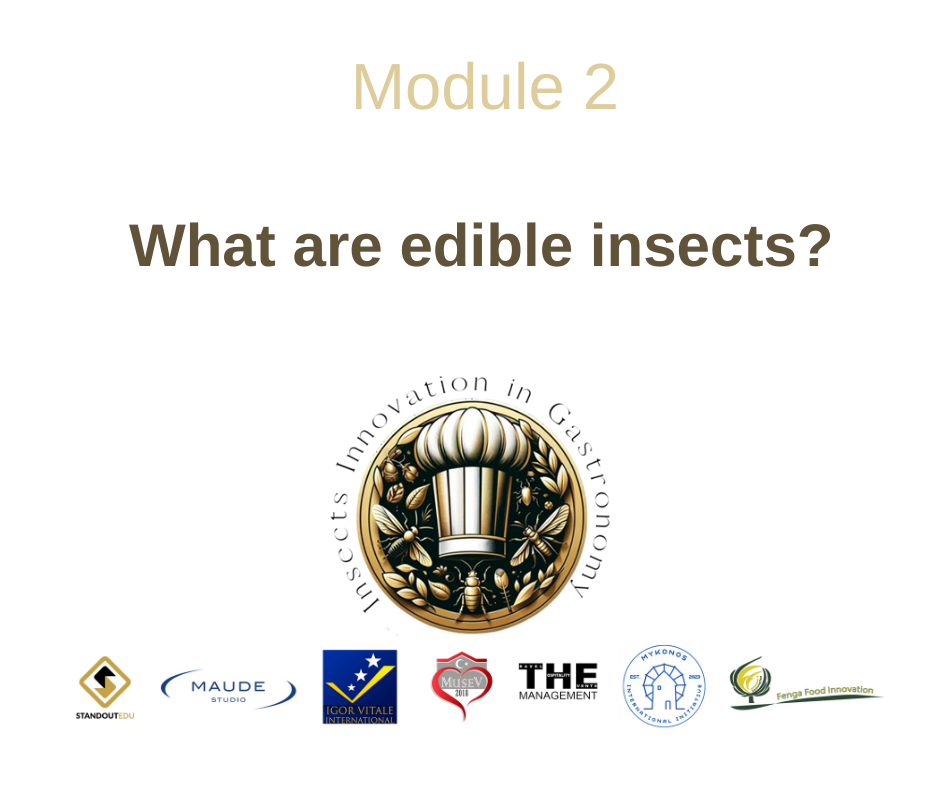Module 2- What are edible insects?

About Course
Dear Participant,
It is a pleasure to welcome you to Module 2: Menu Engineering Methodologies for Favoring the Consumption of Insects in Gastronomy! In this module, we will explore practical and creative strategies to make the introduction of insects in the gastronomic landscape not only possible but also appealing.
We will uncover the psychological reasons that drive us to reject new ingredients and how to overcome this resistance using persuasive methods based on trust, curiosity, and uniqueness, and how menu engineering techniques, strategic tastings, and engaging storytelling can transform insects from a curiosity into culinary delights.
Through an interview featuring a debate on the pros and cons of using insects in gastronomy, we will learn how to highlight these ingredients and present their use in a persuasive and stimulating way, igniting customers’ sense of adventure.
We invite you to participate actively, ask questions, and experiment creatively. Sustainable gastronomy is a challenge we can overcome together by innovating with extraordinary and surprising ingredients.
In order to follow your training process and receive a certificate at the end of the module, you need to register on the platform and enroll in the module. Although we strongly recommend you to register, you can access our training content without registering by using the links below.
Module 2 Syllabus-Script
Unit 1 Video Unit 1 Course Support
Unit 2 Video Unit 2 Course Support
Unit 3 Video Unit 3 Course Support
Unit 4 Video Unit 4 Course Support
Unit 5 Video Unit 5 Course Support
Enjoy your learning journey, and see you soon,
The IIG Team
Course Content
Pre Test Module 2
-
Module 2 Questions


